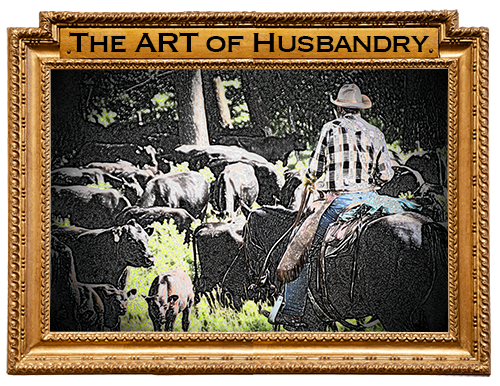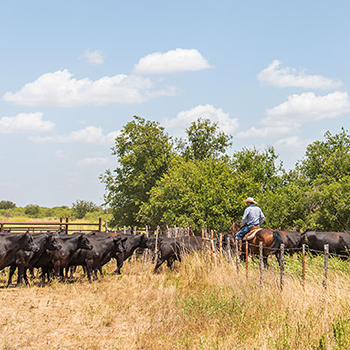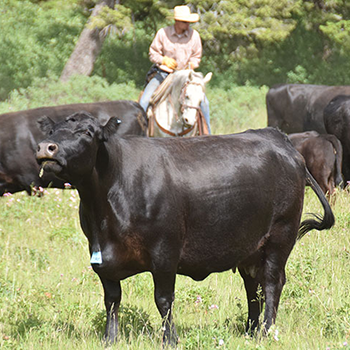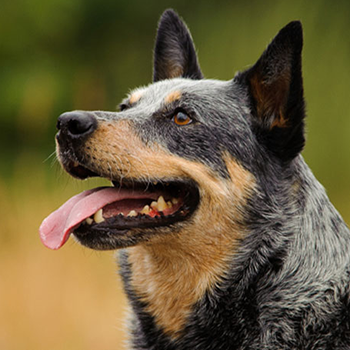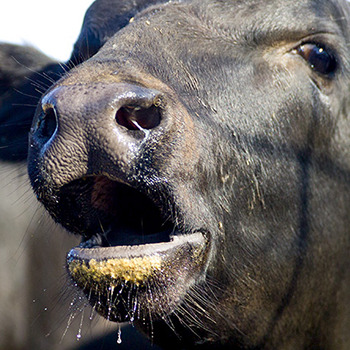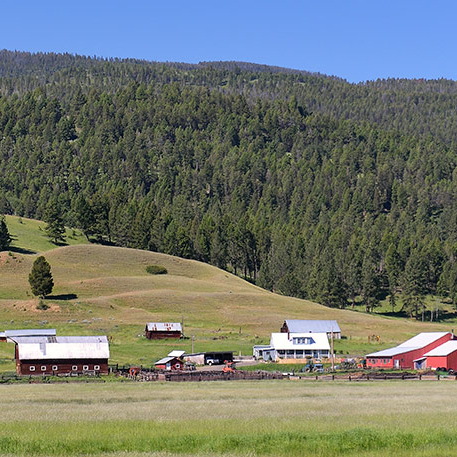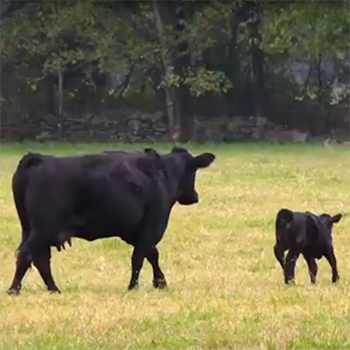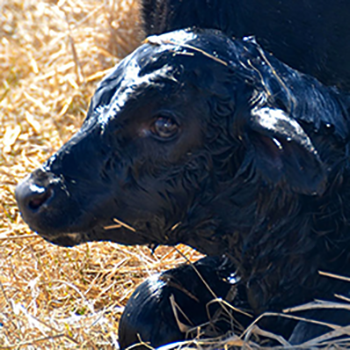Angus Advisor
Our team of Angus advisors offer regional tips for herd management for the fall season.
Southern Great Plains
david.lalman@okstate.eduOne of my longtime friends is a faculty member in the ag economics department at Oklahoma State University. For more than 20 years, she has been telling me the key to commercial cow-calf enterprise profitability is controlling production cost. Of course, at the end of the day, a profitable enterprise must optimize efficient production with cost control. Financial and performance benchmarking data for beef cattle operations provide valuable perspective relative to the weighting of enterprise components as they contribute to profitability.
With the retirement of Stan Bevers at Texas A&M University, to my knowledge we do not have an active cow-calf performance and financial benchmarking program in the Southern Great Plains region. Two publicly available data sets benchmarking herds farther north include the Kansas Farm Management Association (KFMA) (https://www.agmanager.info/kfma) and Center for Farm Financial Management, FINBIN (https://www.cffm.umn.edu/).
Both programs provide aggregated annual summaries of participating herds. Both programs provide reports divided into profitability groups showing characteristics of high- and low-profit operations. In 2019 the Kansas benchmarking summary included 76 commercial cow-calf operations. The Minnesota data set (FINBIN) includes operations from 12 states, as far south and east as South Carolina and as far west as Utah. In 2019 the FINBIN program summary included 241 cow-calf operations.
The data in the KFMA system is divided into high, middle and low classifications for net return to labor and management. In 2019 there was a whopping $529-per-cow difference in net return to labor and management between the high- and the low-profit groups. Gross income per cow was $139 lower, and total expenses were $428 greater per cow in the low-profit operations vs. the high-profit operations.
The FINBIN data set is much larger, allowing division among five profitability classifications instead of three. This results in greater differences. For example, the difference in high- vs. low-profit gross revenue per cow was $325, while the difference in total expense per cow was $516.
We can conclude my colleague continues to have the high ground in the argument, although the output or “production” is important and more pronounced in the FINBIN data. In fact, there was an 8% unit advantage in weaning rate and a 75-pound (lb.) advantage in average weaning weight in the most profitable operations compared to the least profitable. In summary, well-managed commercial cow-calf enterprises have mastered both sides of the profitability equation.
In the 2019 KFMA data, annual pasture costs are not dramatically different with $176 and $189 for high- and low-profit operations, respectively. However, non-pasture feed costs are $245 vs. $489 in high- and low-profit operations, respectively. In other words, the more profitable operators generate an additional $139 of revenue while spending $244 less per cow on purchased and harvested feed.
The 2019 FINBIN summary reveals a similar conclusion: Pasture costs per cow are similar for the profitability groups, while the gap in purchased and harvested feed expenditures is wide.
With a longer growing season and warmer climate in the Southern Great Plains, year-round grazing (or perhaps an extended grazing season) with substantially reduced reliance on purchased and harvested feed is achievable. In fact, many profitable cow-calf enterprises in this region feed little to no hay through the winter. Increased reliance on grazed instead of harvested forage requires a moderate stocking rate, excellent grazing management, a later calving date (in most cases) and a good match of cow type to the forage system.
Today we have the tools to select cattle that thrive in lower-input environments (less reliance on purchased and harvested feed) and, at the same time, excel in postweaning performance and carcass characteristics.
Finally, documenting your own pasture and non-pasture feed costs and comparing to these commercial operation benchmarking programs could prove to be a useful exercise, especially if performed annually.
Western Region
randyp@csufresno.eduFall–calving herds Main Focus — Finish the calving season and prepare for the breeding season
- 1. Sire selection. Continue developing a list of potential artificial insemination (AI) sires. Focus on bulls that will produce high-quality herd replacements. Talk to other producers about bulls that have worked well for them. I like to read bull-sale reports and see if any sires are consistently producing the high-selling bulls in several other cattle programs.
- 2. Prebreeding vaccinations. Be sure to get cows and heifers vaccinated with prebreeding vaccinations at least 30 days prior to the start of the breeding season. Females should receive at least two vaccinations: 1) the respiratory complex plus leptospirosis and possibly vibriosis and 2) either a seven- or eight-way clostridial vaccination.
- 3. Deworming. Consider deworming females at the same time they are vaccinated with either an injectable, paste or pour-on product. We prefer to deworm twice per year, and use an orally active product in the fall and a pour-on product in the spring or early summer.
- 4. Mineral injection. Consider injecting females with Multimin® at the same time vaccinations are given. Boluses, such as selenium (Se) or copper (Cu) boluses, could be used in place of Multimin.
- 5. Retained placenta. Continue to monitor females for retained placenta. If problems arise, treat promptly with prostaglandin (5 cc or 6 cc). If that does not result in the females cleaning promptly, then re-inject with another prostaglandin and combine that injection with an antibiotic either infused into the uterus or administered as an intramuscular (IM) or subcutaneous (sub-Q) injection.
- 6. Mineral supplementation. Be sure females are receiving adequate levels of calcium (Ca), phosphorus (P) and trace minerals deficient in your area. Mineral supplementation becomes even more important as we approach breeding season.
- 7. Body condition score. Continue to monitor body condition score (BCS) of calving females. The target BCS level is 5.0 (on a scale of 1 to 9) for both cows and heifers. Ideally, this level of body condition should be maintained during the breeding season. However, this becomes more difficult as forage resources start to deplete at this time of year, and cows’ nutrient requirements are increasing due to an increasing lactation curve.
- 8. Overly conditioned. Avoid getting cows overly conditioned during the breeding season, as reproductive performance starts to decline if cows are above a BCS of 6.5 to 7.0. This is not typically a problem in most operations. This is most typically a problem with donor females that have not raised a calf for a period of time.
- 9. Protein and energy supplementation. Be certain both protein and energy requirements of females are being met. Try to have females in a state of positive energy balance (gaining weight) going into the breeding season. This is not easy to achieve because of the conditions described in Point 7 above.
- 10. Nursing calf health. Treat calves for either scours or pneumonia promptly. It is well-advised to have first and second treatment options ready for both conditions.
Spring-calving herds Main Focus — Getting calves weaned and keeping them healthy
- 1. Minimize weaning stress. Try to minimize stress on weaned calves as much as possible. Pasture weaning is a big advantage. Try to avoid dry, dusty lots for weaned calves. Shade is extremely valuable, and either sprinklers or a water wagon to control dust is well worth the trouble and expense in my opinion.
- 2. Temperature changes. Hopefully Mother Nature cooperates in terms of weather changes as weaned calves are getting adjusted and transitioned to a new environment. The difference in temperature between the daytime high and nighttime low is extremely important. If that number exceeds 40°, we experience a lot more problems with respiratory disease.
- 3. Started on feed. Get calves started on feed as smoothly as possible. Try to avoid any big changes either in terms of the amount of consumption or the type of ration being fed. Transition calves slowly from a total forage diet to a combination of both roughages and concentrates.
- 4. Rate of development. Be sure both weaned bull and heifer calves are being developed at adequate rates of gain so differences in genetic potential for growth can be exhibited. However, neither sex should be developed at extremely high rates, as excessive fat deposition can hinder future reproductive performance and detrimentally affect foot and leg soundness. Our target level of performance in developing bulls is an average daily gain (ADG) of 3.0 lb. to 3.5 lb. per head per day. A general rule of thumb concerning the level of concentrates for bulls to achieve that level of performance is 1% of body weight (example: 600-lb. bull calves need 6 lb. of grain or concentrates per head per day; 900-lb. bulls need 9 lb., etc.). Our target level of performance in developing heifers is an ADG of 1.5 to 1.75 lb. per head per day. I prefer to develop females on pasture without them ever receiving any grain or concentrates. They must have access to good pasture resources in order to achieve this level of performance. For many producers, they don’t have good pasture available during the fall and winter, and thus they must feed their females in a lot during this time of the year.
- 5. Parasite control. After weaning, control internal and external parasites. Heifer calves should also be Bang’s vaccinated.
- 6. Business or operational plan. Fall and early winter is a good time of the year to put some thought into developing or refining business and marketing plans for your operation. Involve employees in the process. Many times we set operational goals without input from the people who are going to be involved in helping us to achieve those goals. It is typically much easier to get “buy-in” from employees if they feel they had input in developing the mission and goals of an operation.
Southeast Region
jduggin@uga.edu“Wile E. Coyote,” Super Genius, was always on target, or so he thought. I’m sure you recall the cartoon where he was always going just a little too fast before he realized he had run off the cliff. Beef production requires setting targets to achieve premiums and market high-quality cattle. However producers must be focused on achieving these goals without running off the metaphorical cliff. Producers who keep a focus on fertility, cow inputs, and feet and legs, along with other convenience traits, will be stronger over the long term.
The quickest way to get off-target is to move a herd toward infertility. Although no one intentionally does this, it can unfortunately happen. In discussions with producers, fertility and longevity issues seem to be the biggest concern on cow-calf operations. For those developing their own replacements, it is imperative to make deliberate moves to achieve a 90% or higher weaned calf crop. An operation that focuses on mature females and replacement heifers conceiving earlier in the breeding season is key. Even with good reproductive management though, the wrong genetic mating can limit progress on fertility.
A good expected progeny difference (EPD) to use when retaining 20% of heifers as replacements is $M, or maternal weaned calf value. Specifically, for this discussion, $M uses heifer pregnancy (HP), mature cow weight (MW), claw set (Claw) and foot angle (Angle) as a portion of the index. Focusing on these traits, along with good reproductive management steps, is essential for long-term profitability.
This does not mean this is the only selection tool to use, but it may be a good place to start. Once producers familiarize themselves with $M, they can also make more specific selections by looking at traits such as HP, for example, or if cow size or cow inputs need to be improved, producers have the ability to choose bulls that are within a certain range for $EN (cow energy value) or MW (mature weight EPD) for their environment and management goals.
On top of this, producers must continue to be cattle savvy when evaluating potential replacements. Although genomic EPDs are essential, visual appraisal will continue to be necessary. The foot-scoring poster provided online by the American Angus Association is a tool every producer can learn to use and implement on their operation. Producers can use the score of 5 as ideal for claw set and foot angle. Combining visual appraisal of replacements with the use of the claw set and foot angle EPDs in bull selection can help improve foot quality and soundness in the cow herd. When comparing claw set and foot angle EPDs between bulls, the lower number is preferred.
The phrase “slow is fast” applies when making improvements in functional traits while maintaining economically important traits. It will take time, but it will pay dividends in the future. Functional traits such as fertility, foot soundness and cow size will always be focused targets for cow-calf producers.
Midwest Region
baileyeric@missouri.eduAre we on target if we use the calendar to decide when to wean calves? The question may seem a little out there at first. However, there are many production environments where a cow loses a body condition score (1-9 scale; approximately 80-100 lb. per cow) during the final 45-60 days before weaning. Are you money ahead converting cow condition into saleable pounds of calf? The answer depends on the production system and both feed quality and quantity.
The flesh a cow carries is akin to a savings account. To fill that savings account (gain weight/body condition), we first must meet maintenance requirements (energy and protein). Maintenance requirements are a function of size. The larger the animal, the greater the nutrient requirements. As such, it is easier to put pounds on a calf than it is a cow, because of the difference in both her body size and maintenance requirements.
Waiting for calves to reach a specific size can also cause issues. Winning the bragging contest at the coffee shop about weaning weights may feel good, but what was the cost of winning that battle? How much did you spend on winter cow feed last year? At what body condition did your cows go into calving? If the answer to the first question is “very little,” and the answer to the second is BCS 5 or greater, then you are in good shape.
The Midwest region has the advantage of cool-season grass-based pastures. Cool-season grasses have a large spring flush of forage growth. Approximately ⅔ of annual forage production occurs in the spring. The other ⅓ of forage is grown during the fall. Fall forage growth in our pastures is high-quality, and we can use nitrogen (N) fertilizer to increase yield. The quality of the forage will put weight on late-lactation cows.
It is crucial to make sure the pastures are not grazed into the ground. I regularly see thin cows on lush green pastures during fall in Missouri. What is the missing link? When we graze pastures to 2-3 inches (in.) across the pasture, forage intake by the cow is restricted. In this example, quality is not limiting, but quantity is.
One myth that should be discussed when getting calves to an acceptable weaning weight is the use of creep feed. I am unabashedly not a fan of creep-feeding calves. Many folks believe providing creep feed increases calf weight and spares condition on cows. While creep feed increases calf weight, it does not spare body condition on cows. An excellent study published in 1994 in the Journal of Animal Science offered beef calves access to forage (tall fescue hay), milk and creep feed. As creep feed intake increased, hay consumption decreased and milk intake was unaffected. Creep-fed calves may graze less on pasture, but the calves will likely continue to consume milk at the same rate as they did before. In two companion studies, cow body condition was unaffected by offering creep feed to calves for up to 84 days.
Being on target with weaned calves does not always mean maximizing weaning weight. A wise man once said, “The best cow-calf operators do not make the most money in the best years. They lose the least money in the bad years.”
To me, being on target in cow-calf operations means being profitable, not earning bragging rights for weaning weights.
